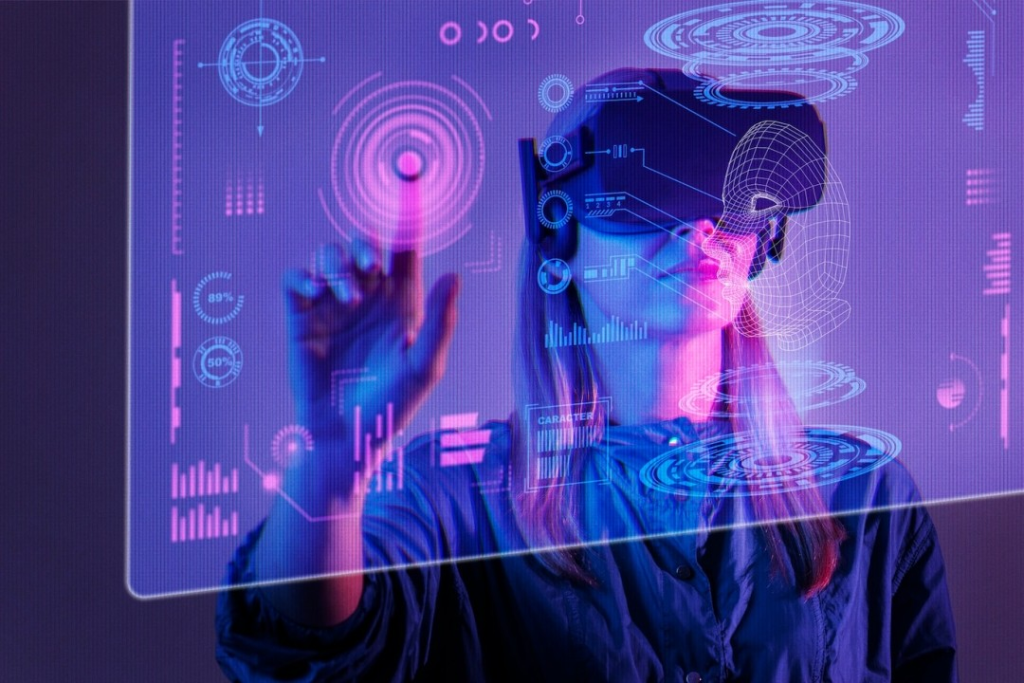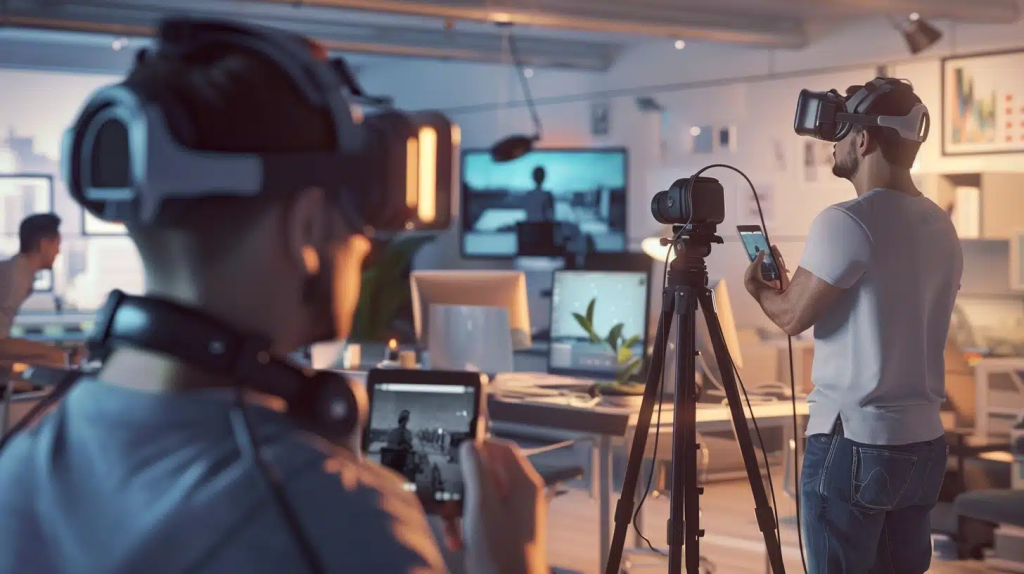The digital entertainment landscape is evolving at a breathtaking pace, transforming how we experience media, connect with others, and spend our leisure time. As technological innovations accelerate and consumer behaviors shift, we stand at the threshold of a new era in online entertainment. This article explores emerging trends, technologies, and possibilities that will shape our digital experiences in the coming years, offering a glimpse into a future that is both exciting and transformative.
The Convergence of Reality and Virtual Worlds
The boundaries between physical and digital reality are increasingly blurring, creating entirely new entertainment paradigms.
The Metaverse Evolution
The concept of the metaverse—interconnected virtual worlds where users can interact, create, and experience content—represents perhaps the most ambitious vision for online entertainment’s future. While early iterations have faced challenges, the underlying principles are steadily taking shape:
- Persistent virtual environments that continue to exist and evolve even when individual users aren’t present
- Interoperable digital assets that can move between different platforms and experiences
- Social interactions that feel increasingly natural and nuanced
- Economic systems allowing for genuine value creation and exchange
Rather than a single unified metaverse, we’re likely to see multiple interconnected digital spaces serving different communities and purposes, from gaming and social interaction to education and professional collaboration.
Augmented Reality Integration
While fully immersive virtual reality environments continue developing, augmented reality (AR) offers a more accessible bridge between physical and digital spaces:
- Location-based entertainment experiences overlaid on physical environments
- AR glasses that seamlessly integrate digital elements into everyday life
- Interactive entertainment that transforms physical spaces into gameplay areas
- Social AR features allowing shared experiences without complete disconnection from surroundings
As AR technology becomes more unobtrusive—eventually transitioning from smartphones to lightweight glasses or contact lenses—the technology will enable entertainment experiences that seamlessly blend with our daily lives.

AI-Driven Personalization and Creation
Artificial intelligence is revolutionizing not just how we consume entertainment, but how it’s created and personalized.
Content That Creates Itself
AI-generated content is rapidly advancing beyond experimental curiosities to become a significant creative force:
- Interactive narratives that adapt in real-time to user preferences and choices
- AI-composed music that responds to environments, activities, or emotional states
- Generated visuals that can create unlimited unique experiences
- Virtual characters with increasingly sophisticated conversational abilities and personalities
These technologies will eventually enable entertainment experiences that are effectively infinite—stories that never need to end, games that continuously generate new content, and virtual companions that evolve alongside users.
Hyper-Personalization
AI algorithms are becoming increasingly sophisticated at understanding individual preferences and tailoring experiences accordingly:
- Entertainment that adapts its pacing, complexity, and style to match user preferences
- Recommendation systems that understand contextual factors like mood, time of day, or social setting
- Content that adjusts difficulty in real-time to maintain optimal engagement
- Collaborative filtering that finds connections between seemingly unrelated preferences
The future of entertainment will likely see a shift from mass-market content toward experiences that feel custom-created for each individual, even when millions are enjoying variations of the same core experience.
Immersive Technologies and Sensory Expansion
The future of online entertainment will engage more of our senses in increasingly convincing ways.
Beyond Visual and Audio
While current entertainment primarily engages sight and hearing, emerging technologies are beginning to incorporate additional sensory elements:
- Haptic feedback systems providing tactile sensations through specialized clothing or accessories
- Scent generation devices that can produce thousands of distinct aromas to complement visual experiences
- Temperature control elements creating environmental sensations to match digital content
- Vestibular stimulation providing the sensation of movement without physical displacement
These elements will combine to create “full-sensory” entertainment experiences that engage users on multiple levels simultaneously.
Advanced Display Technologies
Visual technologies continue advancing toward perfect realism and accessibility:
- Lightweight, high-resolution VR headsets with fields of view matching human vision
- Holographic displays projecting three-dimensional images without requiring specialized glasses
- Direct retinal projection systems that can overlay digital content onto normal vision
- Brain-computer interfaces that may eventually bypass sensory organs entirely
As these technologies mature, the visual distinction between physical and digital reality will become increasingly difficult to discern, opening new possibilities for immersive storytelling and experiences.

Social Connection and Shared Experiences
Despite technological advancement, human connection remains central to entertainment’s future.
Evolution of Social Platforms
The next generation of social platforms will create more meaningful and diverse ways to connect:
- Shared experiences that feel genuinely co-present despite physical distance
- Body language and micro-expression capture creating more natural digital interactions
- Cross-generational platforms bridging age gaps through intuitive interfaces
- Cultural exchange facilitated through real-time translation and contextual explanation
These platforms will focus less on passive content consumption and more on active participation and genuine connection.
Collaborative Creation and Participation
The line between creator and audience will continue to blur:
- User-generated content becoming increasingly indistinguishable from professional productions
- Collaborative storytelling environments where narratives emerge from multiple contributors
- Live events where audience participation meaningfully shapes outcomes
- Decentralized production models allowing niche communities to create specialized content
This democratization of creation tools empowers communities to develop entertainment specifically tailored to their interests and values, rather than relying solely on mainstream productions.
The Economics of Future Entertainment
New technologies are enabling fundamental changes in how entertainment is monetized and valued.
Beyond Subscription Fatigue
As consumers grow weary of managing multiple subscription services, new economic models are emerging:
- Micropayment systems that allow granular content purchases without subscription commitments
- Experience-based pricing where payment scales with engagement level or emotional impact
- Contribution models where communities collectively fund content they value
- Time-banking systems exchanging participation for access to premium experiences
These flexible approaches will create more sustainable relationships between creators and audiences while reducing barriers to accessing diverse content.
Digital Ownership and Provenance
Blockchain and related technologies are redefining ownership in digital spaces:
- Verifiable digital assets with transferable value and persistent ownership
- Creator royalty systems ensuring ongoing compensation for popular content
- Digital collectibles with provable scarcity and authenticity
- User contributions that carry recognized value across platforms
These systems will enable more equitable value distribution among creators, platforms, and users while creating new forms of digital status and collection.
Challenges and Considerations
The future of online entertainment presents significant challenges alongside its opportunities.
Digital Divide and Accessibility
As entertainment experiences become more technologically sophisticated, ensuring equitable access becomes increasingly important:
- Economic barriers to participating in cutting-edge experiences
- Infrastructure requirements that may exclude rural or developing regions
- Cognitive and physical accessibility considerations for diverse users
- Cultural inclusivity that respects and incorporates global perspectives
Industry and policy responses to these challenges will determine whether future entertainment unites or further divides global populations.
Privacy and Autonomy
Advanced personalization raises important questions about data usage and individual agency:
- The balance between customization and surveillance
- Algorithmic determination of content exposure versus user discovery
- Psychological impacts of hyper-optimized engagement techniques
- The right to experience content without tracking or influence
Developing ethical frameworks for these technologies will be crucial to their healthy integration into society.
Environmental Sustainability
The environmental impact of increasingly data-intensive entertainment must be addressed:
- Energy consumption of complex AI systems and rendering technologies
- Hardware lifecycle and electronic waste considerations
- Data center requirements for persistent virtual environments
- Balance between digital and physical resource consumption
Sustainable approaches to technological advancement will be essential for long-term viability.
Conclusion
The future of online entertainment stands at a fascinating crossroads of technology, creativity, and human connection. While predictions about specific platforms or formats may prove fleeting, the underlying trends toward greater immersion, personalization, sensory engagement, and social connection will likely define the coming era of digital experiences.
As these technologies mature, they carry the potential to transcend mere entertainment, offering new ways to learn, connect, create, and experience the world. The most compelling vision of this future isn’t one where technology replaces human creativity or connection, but rather one where it amplifies our abilities to tell stories, share experiences, and build communities across traditional boundaries.
The most exciting aspect of tomorrow’s online entertainment landscape may be its unpredictability—the yet-unimagined experiences and connections that will emerge as creators and communities experiment with powerful new tools. What remains certain is that our digital experiences will become increasingly seamless, personalized, immersive, and socially connected, transforming not just how we’re entertained, but how we interact with the world and each other.
FAQ: The Future of Online Entertainment
Q: How soon will fully immersive virtual reality become mainstream?
A: While significant advancements in VR technology continue, mainstream adoption faces several barriers including cost, comfort, technical limitations, and content availability. Most experts anticipate that truly seamless, lightweight, and fully immersive VR may still be 5-10 years away from mass consumer adoption, though professional applications and enthusiast communities will drive continual improvements. Augmented reality applications may achieve mainstream adoption sooner, as they complement rather than replace physical reality.
Q: Will AI eventually replace human creators in entertainment?
A: Rather than replacement, we’re more likely to see collaboration between human creativity and AI capabilities. AI will increasingly handle technical aspects of creation, generate variations or options, and help personalize experiences—but human creative direction, emotional understanding, and cultural context remain difficult to replicate. The most successful entertainment experiences will likely combine human creative vision with AI’s ability to scale, adapt, and personalize content.

